China
Ripples of fear: the second wave of coronavirus in China
Published
4 years agoon


China the origin of the novel coronavirus, is in fear, as the second wave of coronavirus strikes its shores.
Beijing’s first case in the second wave
Beijing, the capital city of China; on 9 June reported the discharge of the last positively tested COVID-19 patient. The local hospital officials were finally breathing without any mask, the air was at last virus free. Beijing has not reported any new domestic cases in the last 56 days. In a press conference officials said “no new cases and no suspected infections”. People stepped out without masks, on a beautiful summer day; Under the clear blue sky, in the sparking sunshine filling the atmosphere with light and happiness.
This report refilled hope in the entire world, that the virus’s end is not illusory, it is possible. But the short-lived happiness ended when on Wednesday 10 June Mr. Tang a 52-year tested positive for the virus. The disheartening news broke Beijings ‘ day no-fresh case streak as well as blurred the hope of the near end of the virus.
The new case was an indication that for the past few weeks coronavirus has been spreading in the city unnoticed.
The origin of the second wave
When Mr. Tang’s case was routed back and the core of the virus’s spread was found at Xinfadi Wholesale Market. Xindi Wholesale Market is the market that sells 80% of the city’s fruits and vegetables. When dug deeper the virus’s traces were found on ‘the chopping board’ which was used for the imported salmon.
The residents near Mr. Tang’s after the positive test were put under very strict lockdown. China’s public health system has recognized more than 100,000 contacts, all of which were tested and put into strict isolation.
Xindi Wholesale is the hub for fresh fruits and vegetables in the city. Most restaurants and bar in the city get their supplies from this market. The virus’s presence in such an intensified place could spread the virus, like a forest fire. Thousands of samples for testing from the Xinfadi Wholesale market have been taken.
Till 13 June, 45 new cases rooted in the Xinfadi Wholesale market came forward. Though the number of patients in Beijing is considerably low compared to other major cities of the world. But plaintive news is that Beijing is facing the second wave of coronavirus after it thought it eradicated the virus from its soil.
The government on new COVI-19 cases
“In accordance with the principle of putting the safety of the masses and health first, we have adopted lockdown measures for the Xinfadi market and surrounding neighborhoods,” said Chu Junwei, a district official. The city is put into “wartime emergency mode” added Mr. Chu Junwei.
For containing the spread of the virus in other cities, Beijing has been completely isolated from the rest of the country. Inside the city, military police were put on alert, and schools and colleges in the city have been closed. All the transport link connecting to Beijing is closed. The sports and other events in the city have been suspended.
The second wave of coronavirus in the world
COVID-19 is still at a peak in many parts of the world. The USA, Brazil, and the UK are the worst-hit country and still dealing with the worst phase of the outbreak. Every day thousands of new cases and thousand of death around the world is reported.
Many countries like Spain have ended their nationwide emergency and have opened their borders to most of the European countries; after 3 months and with approximately 30,000 deaths. In France, students have returned to school. As many countries loosen their lockdowns, the global picture still grins. With every day setting record of the maximum number of cases in a single day, many countries that somewhere succeeded in containing the virus are now showing signs of a second wave of coronavirus.
About half of the new cases came from Brazil and the US alone. Violence broke out in Germany when 700 people from an apartment block were quarantined. More than 100 workers have tested positive in the German meat processing plant.
South Korea has been one of the succeded nations in containing the outbreak. But officials say that a small but significant second wave of the virus has arrived much earlier than expected. South Korea has not imposed a nationwide lockdown but is implementing a huge test program. While the public of the country strictly follows the social distancing majors.
After reporting the maximum number of fresh coronavirus cases in the month on 12 June; Beijing is racing to quash the outbreak at an early stage. Mass contacting tracing is underway. Residents who have been to the Xinfadi market were tested at the Xuanwu Stadium at night.
Will Beijing become Wuhan 2.0
The condition of the two cities between Beijing and Wuhan are not comparable. But still, the outbreak in the city’s main market reminds the public of the outbreak in Wuhan. The current pandemic control mechanism in Beijing is much better than what was used in Wuhan, last year.
Zhao Dahai, Associate professor at Shanghai Jiao Tong University says that; When the virus struck Wuhan, nobody knew anything about it and this was the reason for such horrible conditions in Wuhan. But now China knows what the novel coronavirus is and is capable of containing the spread of the virus in Beijing.
The virus in the second wave is different
Scientists in China got to know that the virus spreading in Beijing is different from the previously spread one in Wuhan. This time the virus is much more like the one which spreads in Europe.
Wu Zunyou, Chief Epidemiologist Chinese CDS says,” The virus strain found in Beijing looks like a European strain. But it does not necessarily mean that it came from European countries. It may be contaminated from goods or infected people coming to Beijing”.
What does the second wave tell?
The second wave of coronavirus has told that the virus is much more cunning and tricker than expected. Until a vaccine for the novel coronavirus is found we need to be well prepared to battle against the virus.
“In Spite of the very strict disease controlling measures there are still some gaps in our knowledge and some blind spots in our preventive strategies”, says Dr. Zhu Huachen, Associate Professor, University of Hong Kong.
China is the first country to control the outbreak. It has already fought the battle with a virus in Wuhan which was far more serious; and now is well equipped to control it, in its capital city as well.
Also Check
You may like
-

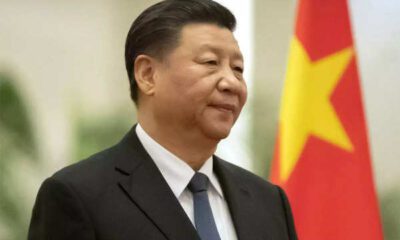


What Xi Jinping Aims, Acquires – The Return of Persistent President
-




How does work-from-home sustain workplace development?
-




How China’s Zero COVID Policy Killed Thousands in Shanghai?
-




Uncertain Future: What Would the Pandemic Look Like in 2022?
-




Omnicron Variant: The Highly Contagious Virus Putting Governments At Alert
-

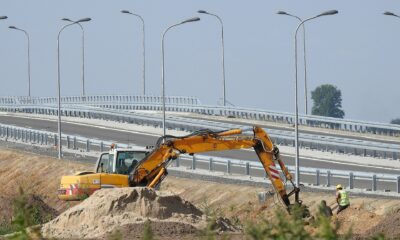


BRI Project: How China is Engulfing Poor Nations’ into its Vicious Debt Trap
China
China’s Growing Foothold in the Middle East -The Rise of a New SuperPower
Published
1 year agoon
February 28, 2023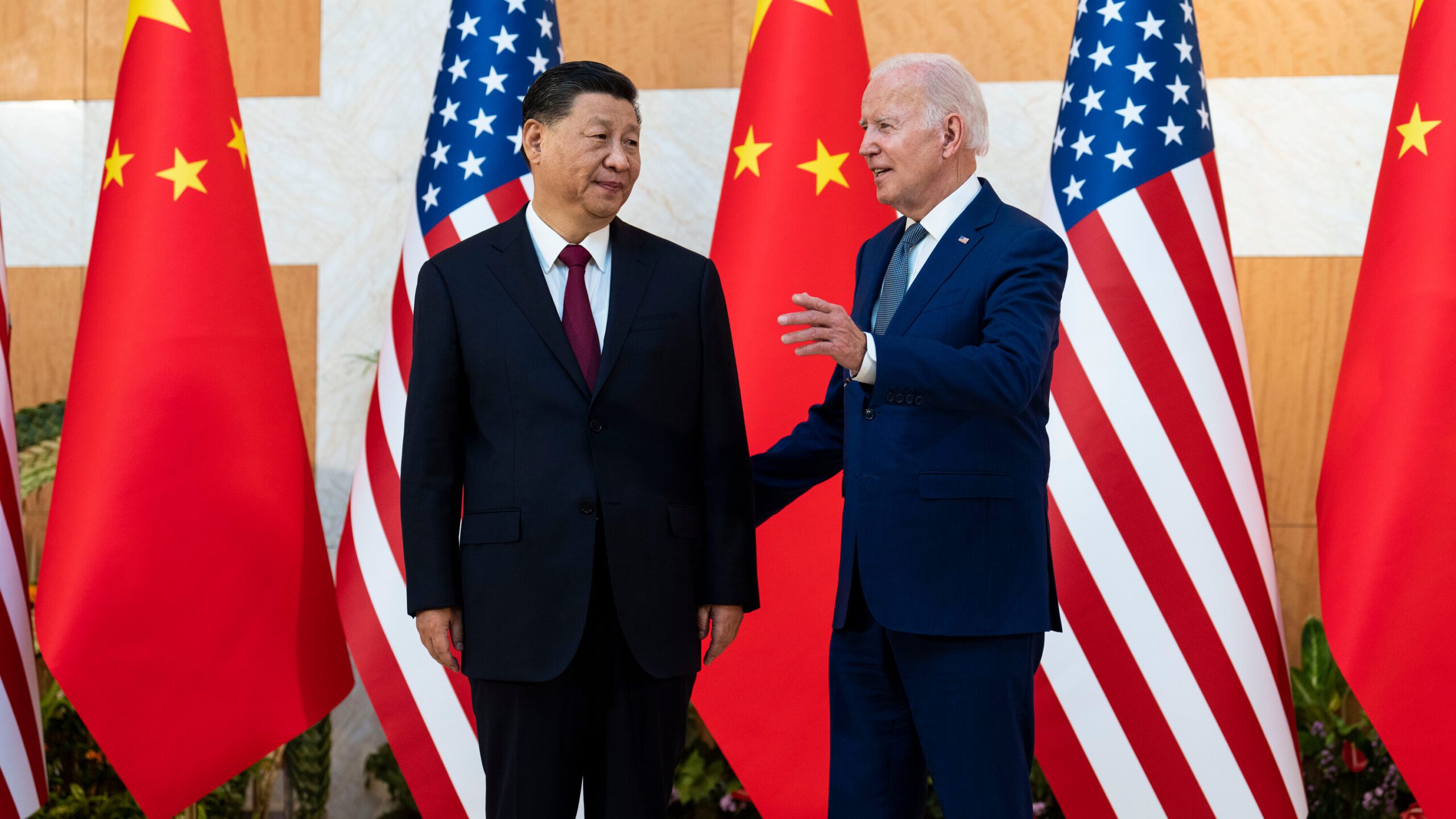

Overcoming the setback of the COVID pandemic, China is well on its way to establishing its foothold as the new superpower. And the most recent of its interest – The Middle East.
After trapping under-developing countries in South Asia and Africa in its debt trap, the dragon is searching for a new ally. An ally with equal resentment with the west and who can support China is becoming the next America, hence Saudi Arabia.
The Glamorous Welcome of President Xi Jinping on the Middle Eastern Soil
Saudi Arabia rolled out the purple carpet when Chinese President Xi Jinping visited Riyadh in December 2022.
Xi Jinping’s journey to Saudi Arabia is his first since 2016, and it is only his third trip abroad since the coronavirus outbreak started. Chinese President Xi Jinping was in Saudi Arabia for a three-day visit that made dozens of agreements for trade, technology, and the economy.
The timing of Xi’s three-day trip to Saudi Arabia is a bit perplexing. The organization of oil-producing countries’ refusal to boost output and the West’s decision to cap the price of Russian oil may indicate that China, Saudi Arabia, and Russia have aligned anti-Western policies.
Considering the warm welcome of Xi Jinping by Saudi Crown Prince Mohammed bin Salman (MBS) and a number of agreements and summits heralded, the White House urged – China’s efforts to sway world events are “not favorable” to the international system.
According to a US spokesperson, the United States is aware of China’s efforts to increase its global influence. Moreover, the USA is well aware that the Middle East is undoubtedly one of those areas where China wishes to expand its influence.
Beijing’s focus on Riyadh may concern the US and its western allies as China is improving its relations with Middle East countries, which are growing further in weapon and oil supply.
Read Next: How China is Engulfing Poor Nations into its Vicious Debt Trap
The $30 million Deal with the New Superpower
The signing of 35 investment agreements worth $30 million between China and Saudi Arabia has dramatically improved the two nations’ commercial ties.
Saudi Crown Prince Mohammed bin Salman and Chinese President Xi presided over the signing of the agreements. The first was an alignment plan between the nations’ Vision 2030 and the Belt and Road Initiative.
Moreover, Prince Abdulaziz bin Salman, the energy minister of Saudi Arabia, and He Lifeng, the head of China’s National Development and Reform Commission, signed a memorandum of understanding on hydrogen energy.
Notably, Chinese cooperation in nuclear energy, security, space, and technology was the highlight of all agreements. China is fostering this relationship with Saudi Arabia, in the region that was formerly under American influence.
During the three-day visit to Saudi Arabia, President Xi addresses a speech in the Saudi capital of Riyadh. The leaders and representatives from the six Gulf Cooperation Council nations – Bahrain, Kuwait, Oman, Qatar, Saudi Arabia, and the United Arab Emirates were present.
China is one of the biggest oil importers from Saudi Arabia, and the President indicated an unorthodox view during this speech. Mr. Xi specified using the Shanghai Petroleum and Natural Gas Exchange to settle oil and gas contracts in Chinese currency.
Crude oil, typically valued in US dollars, is exported by Saudi Arabia more frequently than any other country. Moves away from the US dollar could weaken the dollar’s position as the world’s reserve currency. However, Saudi Arabia is unlikely to make significant changes because it pegs its currency to the dollar.
China and Saudi Arabia both hailed Mr. Xi’s visit as a historic occasion as the relations that were once limited to oil-based were extended into sales, technology transfers, and infrastructure projects.
The Pressure on the USA in the MiddleEast
Due to deteriorating relations with the US and other Western countries, China seeks to strengthen ties with Middle Eastern nations during Xi’s visit. The links between China and Saudi Arabia are hurting the USA economically and globally.
Saudi Arabia has been a loyal ally of the US for a long time. But recently, its connections with China have significantly created pressure on the USA.


Joe Biden visited Saudi Arabia in the summer to calm skeptical friends and reaffirm American engagement in the Middle East. The President ensures the leaders of Arabs in Riyadh that the United States won’t withdraw and let China, Russia, or Iran fill the void.
But he was unable to persuade the Saudis to increase oil output. Instead, Arab would shortly spearhead a plan to reduce oil production by almost 2 million barrels per day as part of an agreement with Russia.
Along with Saudi Arabia, the US has strained ties with China. Saudi Arabia and China have also adopted stances about the Ukraine War that differ from those of the West.
Both parties have refrained from backing sanctions against Russia. Riyadh has repeatedly maintained that Moscow is a significant energy-producing partner who needs to be engaged on OPEC issues.
UAE: Growing Influence of the New Superpower
In the United Arab Emirates, relatively youthful and forceful leaders are now in charge of the Gulf. Although these nations still significantly rely on the United States for their needs in terms of national security and the sale of weapons.


Although the entry of China into the Middle East has raised concerns and competition among western countries, the United Arab Emirates is taking advantage of the competition.
Moreover, Prince Mohammed wants to reduce Saudi Arabia’s reliance on oil exports by diversifying the country’s economy. He wants to develop a new Saudi military industry as part of a bigger plan to increase the kingdom’s independence and economic might.
Prince is also planning to diversify the country using new technologies and improve internal infrastructure innovatively. China is regarded as a crucial ally in developing the nation’s defenses and infrastructure since it can offer the necessary expertise and technology.
On the other hand, China’s priority is energy, which depends on a steady flow of fossil fuels to function. China has been alert since price fluctuation due to Russia’s invasion of Ukraine this year. As well as a Chinese energy crisis last year resulted in blackouts that shut down companies and towns.
China is therefore acting wisely by trading steady fuel exports for technology, nuclear energy, and space technology with Saudi Arabia.
Nevertheless, Xi’s trip to Saudi Arabia showed that Saudi Arabia and the other Arab nations have options. And they will keep using their growth strategy for international stakeholders to their advantage.
China to Arrest USA Autonomy over Saudi Arabia?
Saudi Arab officials have already said that they have never supported polarization. Saudi Arabia is only striving for the nation’s interest; their interests are in the West and the east too.
However, the young lead of Saudi Arabia is searching for an alternative to enhance the nation’s economy without relying on oil exports. And China has a good chance to arrest US autonomy over Arab countries by providing all required help.
The relationship between Saudi Arabia and the US as it stands right now is fickle. However, China and Saudi Arabia’s strong alliances make it the ideal time for China to seize the chance to replace the United States as Saudi Arabia’s primary trading partner.
The new relationship will not only weaken the USA’s influence in the region, but it will also hurt the US superpower’s global image.
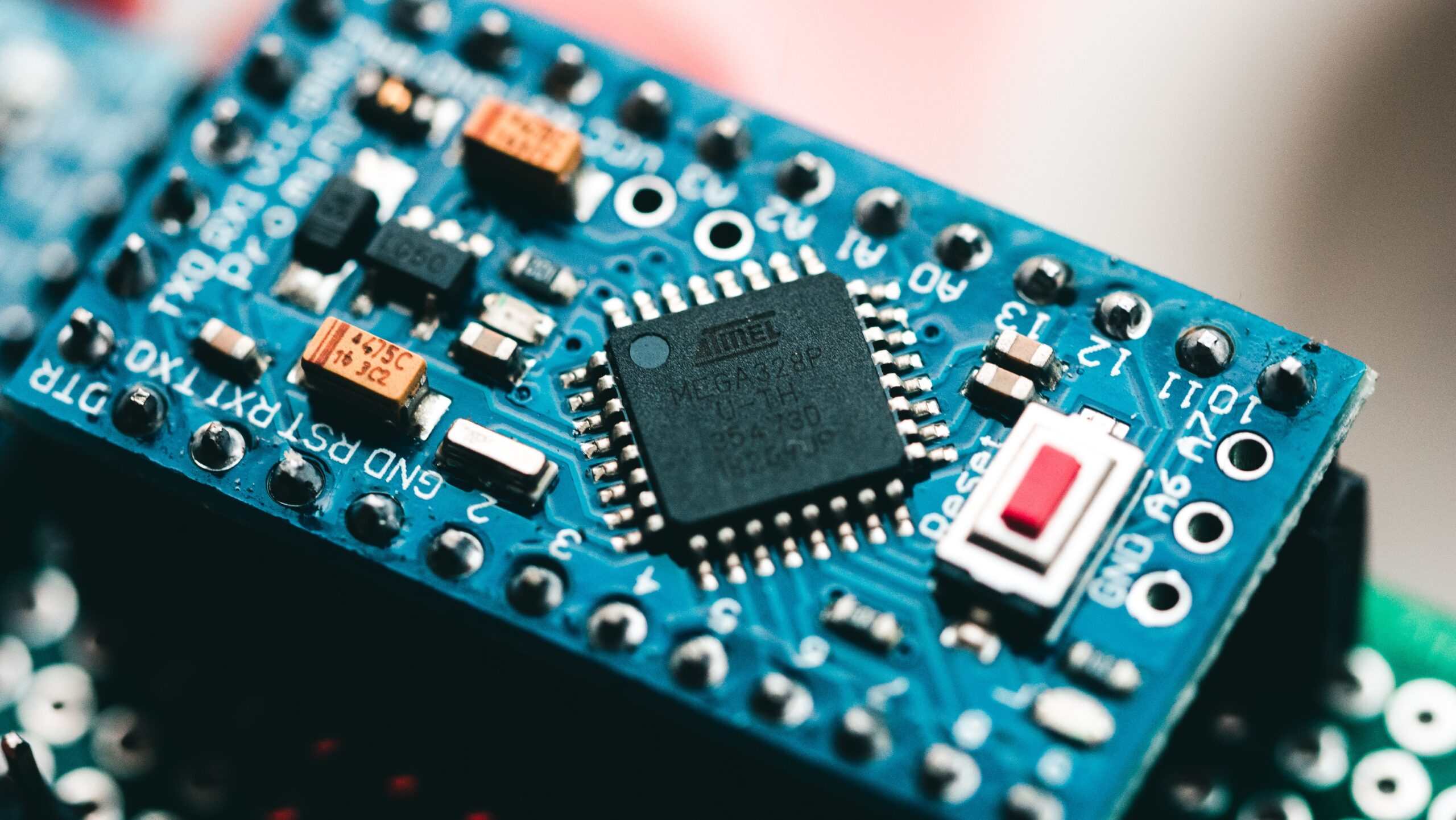

The world is running out of computer chips. And due to the unprecedented shortage of electric chips and semiconductors, a new microchip war is brewing between the two largest manufacturers: India & China.
But, who is winning it? Here’s an explainer:
The Semiconductor Crisis: Explained
Semiconductors are used to make integrated circuits. These microchips are the lifeblood of all electronic appliances, from smartphones, laptops, and gaming consoles to supercomputers and modern weapons.
Powering the technological evolution over the last two decades, the demand for semiconductors has skyrocketed. However, the 2020 pandemic halted the chips’ manufacturing, sparking a global semiconductor crisis.
The crisis was so bad that Apple lost 6 billion dollars in revenue, Maruti had to cut down 40% of its production, and Mahindra had to cut down 20% of its production. Due to chip shortages, the auto industry has already lost 100 billion dollars in revenue.
Even though production has resumed, manufacturers are still unable to fill out the shortage caused by COVID.
So, why is there a sudden shortage of semiconductors and their impact on different industries?
The Rush of people with Electronic Gadgets
The first reason for the shortage is that the industry had already been growing rapidly and was already on the brink of shortage. According to the semiconductor industry association, more than 100 billion integration circuits are used daily worldwide.
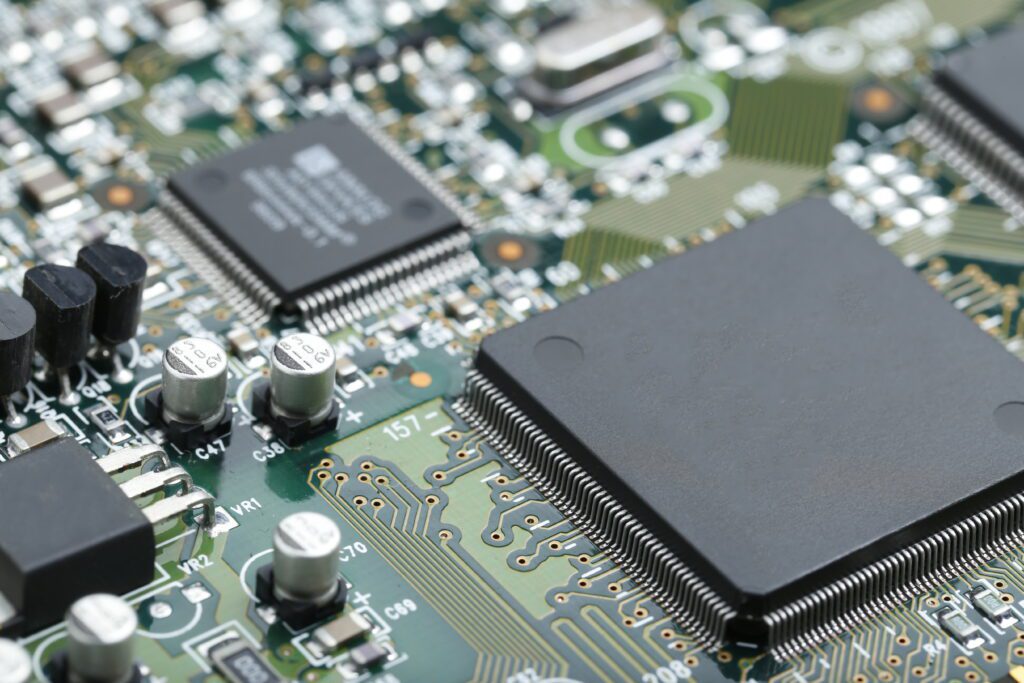

The market is so huge that the industry’s biggest players, including Intel, Micron, Nvidia, and Qualcomm, can’t keep up with the demand, given the enormous size of the market.
The Microchip War & Impact of Covid-19
Lockdown-induced online work dramatically increased demand for electronic devices. But with the manufacturing and transportation services primarily halted, demands outstripped supply.
Another the reason why the shortage is so difficult to recover is that manufacturing a microchip typically takes more than four months. Additionally, microchip manufacturers need giant factories with dust-free rooms, multi-million-dollar machines, molten tin, and lasers.
Since manufacturing cannot be increased on such short notice, the wait times for chips increased alarmingly. The situation has worsened so severely that the waiting time spiked from 11.8 weeks in September 2019 to 21 weeks in August 2021.
Consequently, the market value of semiconductors grew over 20% ($600 billion) in 2021.
Hence, the radical difference in supply and demand has turned the table, and this is why companies from various areas across the world from various sectors have started facing production issues.
The four major industries that have furiously faced the heat of crisis are auto, LED lighting, consumer electronics, and the appliance industries.
What is the position of India in the semiconductor market?
Despite homing big heads like Intel, Micron, and Samsung housing and R&D centers in India. India doesn’t have a significant chip manufacturing industry.
When looked at India’s semiconductor trade situation, India became the 13th largest importer of semiconductor devices in the world in 2020, with $2.38 billion in semiconductor device imports.
And now comes the story’s climax behind the semiconductor war between India and China.
The terrifying part is that about 68.1% of India’s semiconductors were imported from China in 2020. Followed by 40% in and 26% from Hongkong in 2022.
So, what is India doing to fix the situation and reduce its dependence on China? And How is India indirectly in the position of war with China in the semiconductor industry?
India Vs. China: The Microchip War
The roots of India & China’s microchip war can be traced back to the Quad Summit.
During the quad summit conference held by US president Joe Biden on the 24th of September 2021 debated on how to tackle several aspects of economic challenges that come through different countries’ economic development. And one such aspect was the semiconductor shortage in the world.


Long story short, chip manufacturing is a complex process requiring multiple steps. So if each country sets up five divisions for five different processes, it is both costly and time-consuming.
Because of this, India, Australia, Japan, and the US have chosen to work together to execute only those processes that best suit their strengths while transferring the remaining ones to other nations.
That means the US will design the semiconductor; Japan will provide resources to make semiconductor that is raw materials and chemicals like silicon wafers and ICs. While Australia will come up with an electronic supply chain as it has access to critical materials and advanced mining.
Meanwhile, India has many skilled engineers and laborers for cheap assembling and manufacturing.
So, in the quad summit US, Japan, Australia, and India joined hands to build a robust semiconductor supply chain based on their strength to eliminate their dependence on China, Hongkong, and Taiwan.
Thus India’s INR 76000 cores production incentives program is indirectly threatening Chinas mega semiconductor chip industry.
Will the Microchip Program Really Benefit India?
The US is very well aware of future weapons and is acting smartly to overcome China in supercomputing and AI tech. That’s why the US wants semiconductor technology to be kept away from the hands of China.
Hence in October 2022 US banned all semiconductor exports to China. Alongside baning all the technologies that China can use against the US.
The US does not want China to develop weapons that may use against the US military. Consequently, fostering India to come up with semiconductor manufacturing to cut the wings of China in the field of making chips.
As discussed above, the US is king in designing the chips, but with sanctions on exporting any such technology from the US, China will face heat.
While the US has joined hands in the quad summit to design semiconductors for India, here comes the answer to that incentive program.
Is India Winning the Microchip Chip War?
Over the next two years, the Indian government plans to establish 20 semiconductor plants. To tackle the shortage of semiconductor Government of India has lined -up with attractive incentive support for companies engaged in silicon conductors, photonics, semiconductor packaging, compound semiconductor manufacturing, sensors fabs, and semiconductor design.
Moreover, India is also tying up with Taiwan and encouraging semiconductor companies to manufacture semiconductors in India by providing land at affordable prices for their setup.
India is in an overstated circumstance where it is a semiconductor-importing nation and is about to switch to a semiconductor-exporting nation. Here is some heat in China. And that sparks an unintentional semiconductor war between China and India.
China
What Xi Jinping Aims, Acquires – The Return of Persistent President
Published
2 years agoon
November 7, 2022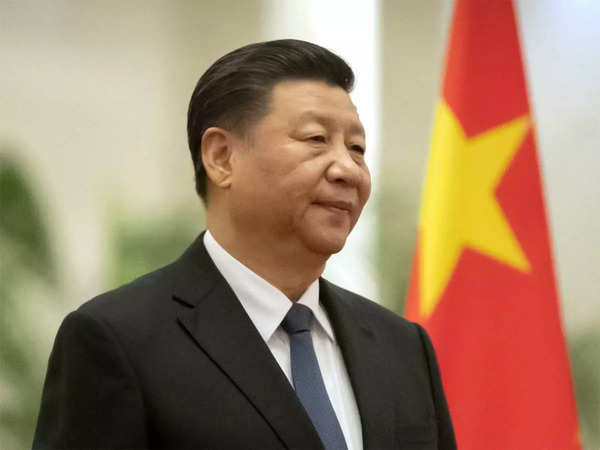

The results of China’s presidential election were known to the entire globe, and especially to the citizens of China. In the wake of the recently concluded party congress in Beijing, Xi Jinping has established himself as the kingmaker.
Xi Jinping was a driving force behind the repeal of presidential term limits in 2018, which opened the door for him to hold the position of leader for life if he desires.
Xi Jinping has broken the previous history by accepting a third term as party leader and significantly enhanced the concentration of power at the organization’s top.
But what does the persistent president’s return means for China and the world? Here’s a detailed insight.
“The World Development needs China…”. – Xi Jinping
After being elected as president of China for the third consecutive term in a closed-door election, Xi Jinping stated in his first address to the audience, “China cannot develop in isolation from the world. The world’s development also needs China,”
This quote shows how China focuses on its growth to have a more prominent global effect as a superpower.
Additionally, Xi Jinping, with the proceedings of the new term, wants to focus on achieving economic, industrial, and technological goals. That will give the Chinese economic and technological sector a competitive edge to become the next prominent superpower.
However, the road ahead toward leading China as a top superpower for Xi Jinping needs to be smoother. There are unresolved domestic problems, economic difficulties, and hostile international relations with neighbors like Taiwan and India. One of his biggest concerns would be his relationship with rival America.
Nevertheless, Xi Jinping continues to hold the view that despite numerous challenges in becoming a superpower, the Chinese people would always support and remain steadfast on this side.
“On the road ahead, no matter high winds, choppy waters, or even dangerous storms, the people will always be our most solid support and strongest confidence,”
President Xi Jinping
Two Countries Share a Friendship with ‘No Limits’ – Xi Jinping on Relationship with Russia
Mr. Putin will need China, said Alicia Garcia Herrero, head economist for Asia Pacific at Natixis. Russia must continue importing semiconductors from China to keep military, industrial, and civil needs operational.
Due to restrictions from US and European alliances, Russia has no choice but to export chips from China to operate for civil and military purposes.
Chip export from China to Russia more than doubled to roughly $50 million in the first five months of 2022 compared to a year earlier. While exports of other components like printed circuit boards also witnessed a double-digit percentage increase.
However, Xi Jinping raised concerns over the Russia-Ukraine war during his visit to an international summit in Uzbekistan with President Putin.
The focus, though, was on Putin’s oblique acknowledgment of Chinese “concerns” regarding the invasion.
“We highly value the balanced position of our Chinese friends when it comes to the Ukraine crisis,”
Putin, Russian Presidnt
Nevertheless, China has been cautious in its interactions with Moscow to avoid falling victim to any potential sanctions and alienating other nations, such as those in Central Asia, with China forging economic links.
Yet, with the ongoing trade across two borders of China and Russia, Xi Jinping’s thought over Russia’s invasion clearly — supports the friend firmly in the backend while criticizing and commending Russia in front of the world.
“Regard science and technology as our primary productive force” – Xi Jinping
The most potent president of decades in China, Xi Jinping, at the opening of the meeting, straight away displayed China’s powerful ambitions and reliance on science and technology.
Violating a tradition that had been in place for 40 years, six out of politburo’s 25 members now have a background in science. Compared to just one person in the previous politburo, who had no members with education or experience in science or technology.
And there was a significant turnaround of the party’s top leadership after Xi Jinping was reinstated as general secretary for a third term.
Xi Jinping’s choices emphasize building up Beijing’s powerful military and technological capabilities so that China can defend or resist any pressure from the US and its allies, especially when it comes to enforcing territorial claims over Taiwan.
Moreover, China is also expected to prioritize research and development in aerospace and space science. To boost the aerospace and space science workforce, China aims to bring back Chinese scholars who are currently abroad or hired by foreign researchers.
Such initiatives and endeavors unequivocally show China’s priority for science and technology in the years to come. In 2021, China spent around 2.8 trillion yuan, 2.4% of China’s GDP, on Research and Development.
However, the current five-year plan for the nation sets a target of an annual increase of more than 7% every year.
“China must strengthen the unity of all ethnic groups.”
As western countries continue to charge Beijing with committing genocide against the predominantly Muslim Uyghur population in the region, China’s president, Xi Jinping, visited Xinjiang for the first time in eight years.
A supra-governmental group subject to US sanctions, the Xinjiang Production and Construction Corps (XPCC) was inspected by the president, who lauded the organization’s “excellent progress” in reform and growth.
Nevertheless, President Xi Jinping’s visit to the Xinjiang area comes out as more deliberate than opportunistic as the ruthless tactics employed by the Chinese government against the Uyghur minority in the northwest Xinjiang province have been brought to light by a cache of leaked documents and images.
Uyghurs are allegedly forced to unlearn their culture and religion via a network of institutes run by Chinese authorities in the area. The exposed documents state that
China has a shoot-to-kill policy for Uyghurs who attempt to flee the internment centers. The materials also go against the Chinese government’s claim that the Uyghurs willingly attend the facilities.
However, China’s Foreign Ministry has rejected the allegation and said the Media is spreading lies and rumors.
Though China was seriously condemned by the UN and western countries, knowing such ruthless behavior of China towards minorities is nothing new. Such criticism compelled President Xi Jinping to travel to Xinjiang, a region he hadn’t been to in eight years.
However, the future of the oppressed Uyghur Muslims and other minority communities under Vi Jinping’s third term is still uncertain.
Read More: Modern Uyghur ‘Genocide’ in Xinjiang China
Trending
-



 Featured9 months ago
Featured9 months agoWorld passively watching as Israel perpetrates open-ended massacre in Gaza
-



 Featured10 months ago
Featured10 months agoIsrael is Hiding Crucial Demographic Facts About Palestinians
-



 Featured2 years ago
Featured2 years agoArgentina wins the World Cup; are there any other winners?
-



 Featured4 years ago
Featured4 years ago“Do Not Waste Water Even If You Were at a Running Stream” Prophet Muhammad
-



 Featured3 years ago
Featured3 years agoHistory of the Ottoman Empire
-



 Featured10 months ago
Featured10 months agoMuhammed: The Greatest Man to walk on Earth
-



 Featured2 years ago
Featured2 years agoChristian militia infiltrate Lebanon
-



 Featured4 years ago
Featured4 years agoFriendship is a Way For Jannah
